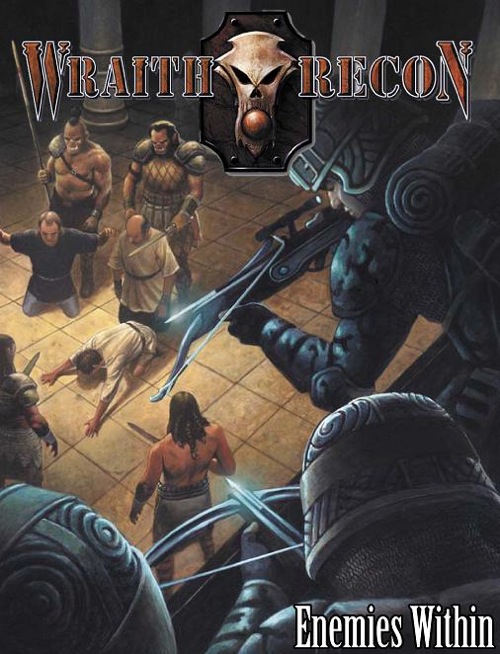The next few months have really got some great things in store for 4th Edition.
First off, as you probably already know we’ve finally got Arcane Power coming out, plus Death’s Reach, the first epic level adventure. In May we get Monster Manual 2, and coming up here in April we get the first round of Player’s Handbook Heroes miniatures. I’m sure there’s more, however besides the WotC stuff Goodman Games has just updated their Coming Soon page to include some really appetite whetting stuff.
In April, aside from a couple awesome looking new DCC’s that I WILL be running for my group, we have the first issue of Level Up, which means we finally have a magazine devoted completely to 4th Edition. I am really looking forward to this as it will feature “adventures, character options, new monsters, Azagar’s Advice for Adventurers, and the endearing wisdom of Dear Archmage Abby. All for only $1.99! Look for the first issue at your local store in April.”
In May Goodman Games is dropping Hero’s Handbook: Eladrin, the second of the Hero’s Handbook series, which will give you lots of more crunch and fluff options for your Eladrin pc’s. (Click here to check out Antioch’s review of Hero’s Handbook: Dragonborn.) Also to be released is the PDF for the Amethyst Campaign Setting. This setting is built upon the idea of “What would happen if a fantasy world of dragons, elves, and fairies suddenly appeared in our real world?” It sounds and looks pretty cool and I’ll most likely be grabbing this to check it out. The print edition is being released later in the year at Gen Con.
Also in  May we have the second installments for both the Forgotten Heroes and Points of Light series. Forgotten Heroes: Scythe and Shroud will feature death as a new 4E power source – that’s right, death as a power source – and will feature Goodman Games’ versions of the the assassin, deathwarden, necromancer, and spiritsworn. While I have always been a huge fan of modules, and especially GG’s modules, I have never been a big fan of 3pp’s versions of races and classes, but the theme is so cool these will definitely be getting at the very least a playtest at our gaming table. Points of Light II: The Sunrise Sea is a systems-nuetral accessory that hooks you up with four new settings, each extensively detailed and mapped for your D&D games, all in Wilderlands style goodness.
May we have the second installments for both the Forgotten Heroes and Points of Light series. Forgotten Heroes: Scythe and Shroud will feature death as a new 4E power source – that’s right, death as a power source – and will feature Goodman Games’ versions of the the assassin, deathwarden, necromancer, and spiritsworn. While I have always been a huge fan of modules, and especially GG’s modules, I have never been a big fan of 3pp’s versions of races and classes, but the theme is so cool these will definitely be getting at the very least a playtest at our gaming table. Points of Light II: The Sunrise Sea is a systems-nuetral accessory that hooks you up with four new settings, each extensively detailed and mapped for your D&D games, all in Wilderlands style goodness.

And arriving in June, the month I think I am looking forward to most, will be the Adventures of Frank Frazetta’s Death Dealer: Shadows of Mirahan. I can’t begin to describe how freaking cool this looks. Anyone who appreciates Frazetta’s rich history of art and cover work will dig this, especially those who have read the Death Dealer comic. This will include setting details, rules variants, and pre-generated characters. I am already itching to run this for my group.
From Here to There is going to be a collection of “nine travelling adventures” to get you out of the dungeon and on the road. Not much more is revealed in the review but this looks pretty alluring. There are a couple players in our group, myself included, who tire quickly of dungeon crawling when that’s all you’re doing. That is why when we finished Keep on The Shadowfell I recommended we put up a vote to either continue with Thunderspire Labrynth or start Scales of War. So far Scales of War has been a lot of fun. 😉 Though our friend Adrian has been running the WotC adventures (Antioch is one of the players) and they are finishing up Pyramid of Shadows. When they start up King of the Trollhaunt Warrens I will be bringing back my Wizard Kendric whom I played in KotS. Blood Mage paragon path – sweet.
This year has been really good so far regarding D&D and our gaming group. Now, armed with the PH2 and looking ahead to all the goodies coming out for 4th Edition just in the next few months, this year is gonna kick ass!


